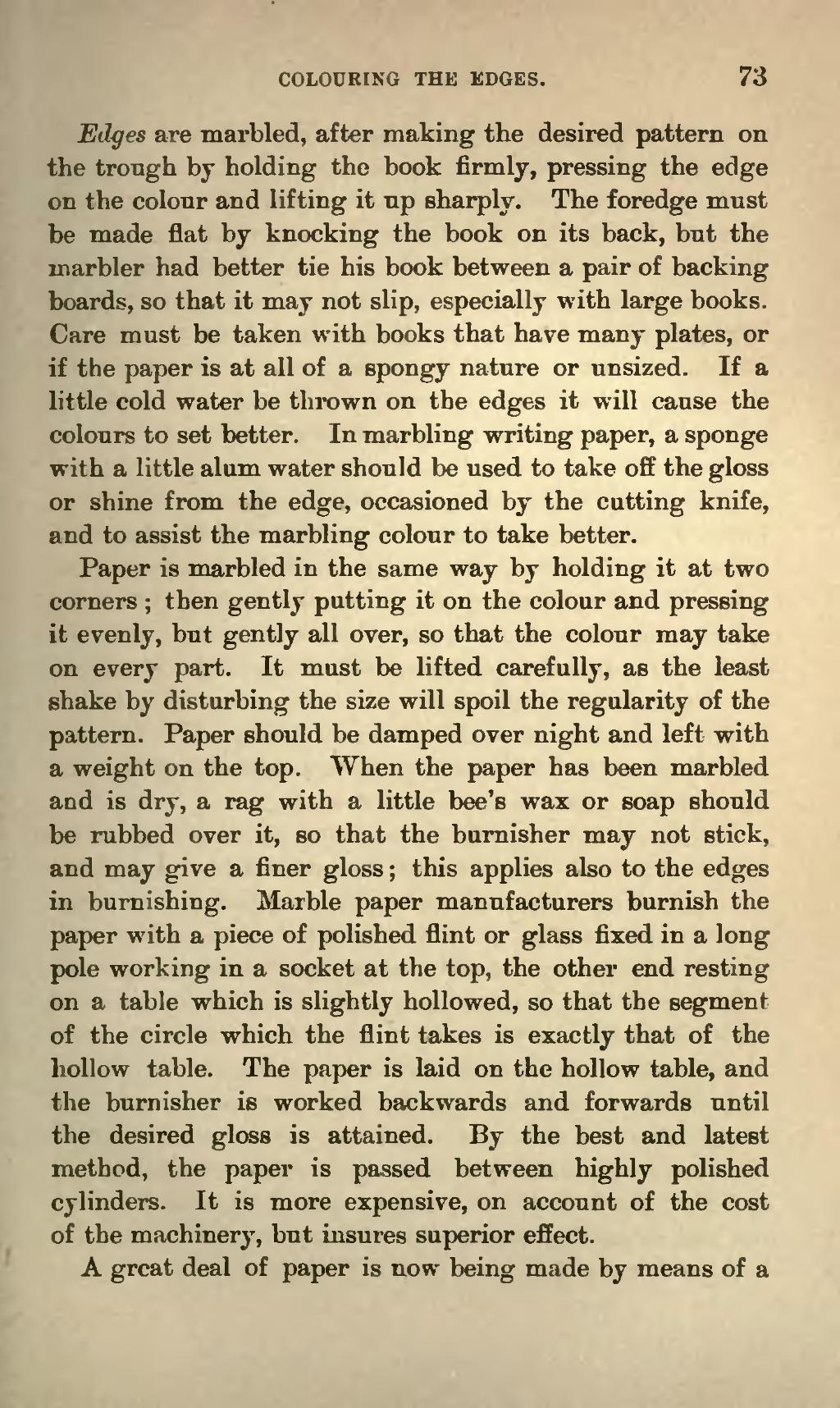Edges are marbled, after making the desired pattern on the trough by holding the book firmly, pressing the edge on the colour and lifting it up sharply. The foredge must be made flat by knocking the book on its back, but the marbler had better tie his book between a pair of backing boards, so that it may not slip, especially with large books. Care must be taken with books that have many plates, or if the paper is at all of a spongy nature or unsized. If a little cold water be thrown on the edges it will cause the colours to set better. In marbling writing paper, a sponge with a little alum water should be used to take off the gloss or shine from the edge, occasioned by the cutting knife, and to assist the marbling colour to take better.
Paper is marbled in the same way by holding it at two corners; then gently putting it on the colour and pressing it evenly, but gently all over, so that the colour may take on every part. It must be lifted carefully, as the least shake by disturbing the size will spoil the regularity of the pattern. Paper should be damped over night and left with a weight on the top. When the paper has been marbled and is dry, a rag with a little bee's wax or soap should be rubbed over it, so that the burnisher may not stick, and may give a finer gloss; this applies also to the edges in burnishing. Marble paper manufacturers burnish the paper with a piece of polished flint or glass fixed in a long pole working in a socket at the top, the other end resting on a table which is slightly hollowed, so that the segment of the circle which the flint takes is exactly that of the hollow table. The paper is laid on the hollow table, and the burnisher is worked backwards and forwards until the desired gloss is attained. By the best and latest method, the paper is passed between highly polished cylinders. It is more expensive, on account of the cost of the machinery, but insures superior effect.
A great deal of paper is now being made by means of a

